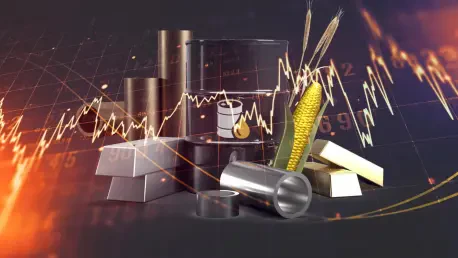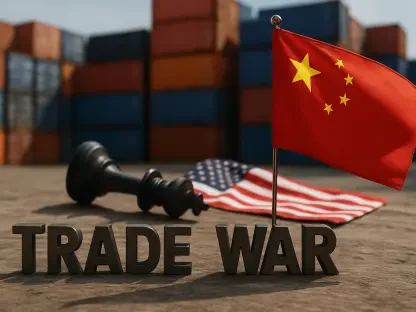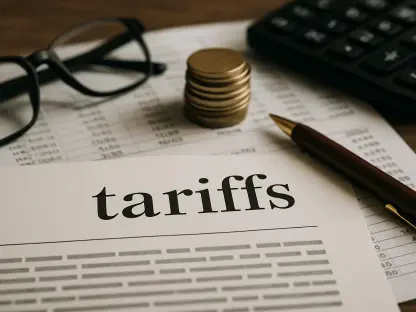The commodities landscape in 2025 reveals a complex, interwoven tapestry of global influences where market dynamics shift rapidly amid technological advances, geopolitical upheavals, and environmental considerations. As basic goods crucial to the world economy, commodities like oil, gold, silver, and agricultural products are inherently volatile, with their prices subject to a myriad of pressures. Understanding these forces is essential not only for investors but also for policymakers and businesses that rely on these foundational resources. Insights into commodities are crucial in today’s economy where market trends reflect larger shifts in economic, technological, and social realms, compelling stakeholders to navigate these waters with informed strategies.
Economic Forces and Market Dynamics
The economic forces shaping commodities markets in 2025 are multifaceted, ranging from inflation dynamics to exchange rate fluctuations. Price volatilities have been exacerbated by recent global economic slowdowns that emerged from pandemic recovery shifts and subsequent supply chain recalibrations. With interest rates as a tool for central banks to rein in inflation, commodity prices are intricately linked to these macroeconomic levers. When central banks increase interest rates, borrowing costs rise, often leading to lower demand for commodities, as seen in specific sectors such as housing and manufacturing that heavily consume raw materials. Consequently, prices can drop as demand tapers.
Moreover, the influence of emerging markets on the commodities sector cannot be understated. Nations with burgeoning middle classes, like India and Brazil, have shown increased consumption of commodities, from energy to agricultural goods. These countries are pivotal to demand dynamics because their increasing industrial activities and infrastructural projects are dependent on accessible raw materials. Therefore, even slight economic policy changes within these countries can ripple quickly through global commodity markets. Investors closely monitor policy shifts in these regions, as well as currency fluctuations that can substantially impact purchasing power parity and thereby affect global trade and investment flows.
Technological Advancements and Their Impact
Technological advancements revolutionize commodity markets, creating opportunities while simultaneously introducing complexities. The integration of blockchain technology in trading platforms has begun to reshape how commodity transactions occur by enhancing transparency and efficiency. Blockchain’s decentralized nature ensures secure, traceable, and tamper-proof records, fostering trust among market participants, a crucial factor given the extensive global nature of commodity expeditions. Many companies have transitioned to using blockchain for smart contracts, which automatically execute trades when certain pre-set conditions are met, reducing administrative burdens and minimizing human error.
Additionally, the rise of artificial intelligence (AI) in predictive analytics is transforming how commodity market data is interpreted and forecasted. AI algorithms can process massive datasets to identify patterns that human analysts might overlook, distilling meaningful insights from historical price trends, consumer behaviors, and climatic conditions, which are particularly relevant in agribusinesses. By leveraging such predictive capabilities, players within the commodities market can better anticipate potential disruptions, like weather patterns adversely affecting crop yields. This technological integration helps stakeholders make informed decisions, hedge against uncertainties, and remain adaptable to changing market currents.
Geopolitical Tensions and Global Supply Chains
Geopolitical tensions play a significant role in the supply and pricing of commodities, as they often intersect with critical supply chain routes. In 2025, the world witnessed increased unrest in key oil-producing regions, which compounded existing supply chain challenges. Disruptions in the Middle East, for instance, can cause significant shifts in oil prices, affecting global markets and driving up costs for energy-dependent industries. The volatility is further magnified in scenarios where international trade relations are strained, like tariffs or sanctions that restrict commodity flows.
To mitigate these risks, countries and corporations have begun to diversify their supply sources. Strategic alliances and partnerships have been formed across continents to secure more stable commodity supplies, even if they come at a higher cost. By building diversified portfolios of import partners, nations aim to minimize dependency on single sources that could become geopolitical hotspots. The challenge lies in balancing these diversified supply chains without substantially increasing costs or sacrificing quality of raw materials. This makes risk management a core component of strategic planning within the commodity sector, ensuring that unforeseen geopolitical situations impose minimal impact on supply constancy and financial performance.
Environmental, Social, and Governance (ESG) Considerations
In recent years, ESG considerations have increasingly influenced the direction and policies surrounding commodity markets. Stakeholders, including investors, are placing significant emphasis on sustainability within their portfolios, fundamentally altering how commodities are sourced and valued. The introduction of carbon trading and renewable energy credits underscores the market’s shift towards greener practices. Companies are adapting by integrating sustainable practices within their operations, aiming to reduce carbon footprints and promote long-term ecological stewardship.
Social responsibilities have also garnered attention, where fair trade principles and ethical labor conditions become prerequisites for attracting conscientious investors and maintaining market reputations. Governance factors, including transparency and accountability, are central to these considerations. Corporations are held to high standards, required to demonstrate compliance with international ESG mandates. Those that lead in this green transition not only align with global expectations but are also poised to capitalize on new opportunities as demand for sustainable commodities rises.
Future Perspectives and Strategic Implications
In 2025, the commodities market paints a picture of intricate and interlinked global forces where dynamics change swiftly due to technological innovations, geopolitical disruptions, and environmental demands. Commodities like oil, gold, silver, and agricultural products are vital to the world economy but exhibit significant volatility, with prices influenced by numerous factors. Grasping these elements is crucial for investors and also for policymakers and businesses that depend on these essential resources. In today’s economy, market trends in commodities often mirror broader transformations across economic, technological, and social domains, urging stakeholders to develop informed strategies to effectively navigate these complexities. The interplay of these forces shapes the landscape that demands astute analysis and quick adaptability.
Technological advancements continue to innovate extraction and production methods, influencing supply chains and cost structures. Meanwhile, geopolitical tensions can disrupt trade routes and impact market stability. Environmental factors also play a pivotal role, with climate change and sustainable practices affecting the availability and valuation of resources. As we move forward, understanding these intricate dynamics becomes indispensable for anyone engaged in the commodities market, ensuring they stay ahead in this unpredictable yet fascinating economic sector. The stakes are high, but with the right knowledge, stakeholders can turn challenges into opportunities.









